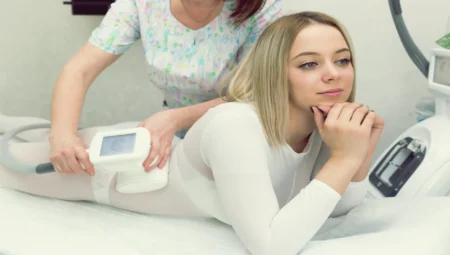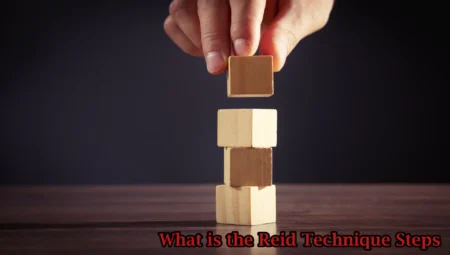The Self-Watering System is a convenient and effective answer to maintaining your plants’ moisture and health, even if you don’t have the time to micro-manage them after planting. It is also convenient because it uses approximately 50% less water than normal irrigation!
It does not matter if you are an experienced gardener or a complete beginner, maintaining a healthy garden can be a real challenge, whether because of a busy schedule or extended periods of time when you can’t be there physically to care for your plants. You might’ve heard of self-watering systems and wondered just how “self” the systems really are. Here’s the most comprehensive exploration of the self-watering world you’re apt to find anywhere.
Plant Self-Watering System
When maintaining a healthy indoor or outdoor garden, the choice of a self-watering system can make all the difference. The right Self-watering system, on the one hand, ensures your plants receive just the right amount of water for optimal growth. On the other hand, it can be the indoor gardener’s best friend because it eliminates some of the drudgery of plant care. In this essay, we’ll consider the factors you need to consider when choosing just the right self-watering system for your plants.
Self-watering system are designed to provide plants with a constant supply of water, eliminating the need for manual watering. They consist of various components, including:
- Reservoir: A water-holding container that supplies the water to the plants.
- Wicking Medium: A material that absorbs water from the reservoir and transports it to the root zone of the plants.
- Porous Tube or Wick: A tube or cord that connects the reservoir to the wicking medium, allowing water to flow through it.
Benefits of Self-Watering Systems
Gardening can be a lot of hard work, but there are many different ways that people can go about things in order to make it a little bit easier. These are devices that you put your plants in that will water the plants for you.
You don’t even have to be there!Now, the self-watering system is not a new thing, even if it is a hot trend right now.
People have been using these things for a long time, and the trend has recently started to pick up even more steam. These are really great for a lot of different reasons. First off, if you’re a busy person who loves plants and just can’t be around them all the time to give them the love and attention they need, then the self-watering system is just the thing for you.
Incorporating a self-watering system into your garden offers numerous advantages:
- Convenience: Eliminate the chore of manual watering, saving time and effort.
- Consistent Hydration: Provide plants with a steady supply of water, ensuring optimal growth and health.
- Reduced Water Consumption: Self-watering systems use water efficiently, minimizing waste and lowering water bills.
- Optimal Soil Moisture: Regulate soil moisture levels, preventing over or under-watering.
- Plant Protection: Protect plants from drought, especially during periods of neglect or absence.
Types of Self-Watering Systems
Various types of self-watering systems cater to different gardening needs:
- Wick Systems: Wicking fabrics absorb water from a reservoir and transfer it to the root zone of the plants.
- Pressure-Compensating Drip Systems: Water is released through emitters connected to a water source with a constant pressure.
- Capillary Mat Systems: Plants are placed on a mat that absorbs water from a reservoir beneath.
- Gravity-Fed Systems: Water flows from a raised reservoir through tubes or hoses into the root zone of the plants.
Choosing the Right Self-Watering System
When selecting a self-watering system, consider these factors:
- Garden Size and Layout: Determine the size and shape of your garden to choose a system that can accommodate your needs.
- Plant Type: Different plants have varying water requirements, so choose a system that can provide the necessary hydration levels.
- Budget: Self-watering systems vary in cost, so establish a budget before making a decision.
- Installation Effort: Assess the complexity of installation for each type of system and choose one that fits your skill level.
Both novice and experienced gardeners will find self-watering systems to be an invaluable tool, offering them convenience, even and reliable watering, and water conservation. There are several self-watering systems available, so it is important to understand what they offer and how they work. Then you can consider your own watering needs and select the system that is right for you. With a self-watering system in place, you can enjoy the peace of mind that comes with knowing your garden is thriving without you while keeping your water use efficient and consistent.
How do you make a simple self watering system?
A basic self-watering system can be a efficient and inexpensive solution for maintaining plant health, especially for people with busy schedules or limited access to water. This system automatically provides water to the plant without the gardener’s having to remember to water.
The basic components of a simple self-watering system include a pot, a water-holding tray, and a wick. The pot is where the plant is housed; the tray holds the water; and the wick, typically made of a hydrophilic material (a material that attracts water), carries the water from the tray to the plant. The plant draws in water as it needs it.
How do you water plants while away for a week?
Invest in a self-watering system. These systems keep the plants watered regularly with the appropriate amount of water. Simply put, they do the work for you. After you first set it up, all you need to do is keep the water reservoir full.
What are some disadvantages of a self watering system?
Using a self-watering system can be a real time-saver when it comes to caring for the various plants and flowers you have around your home, and it can make up for forgetting to water those plants once in a while. But, while there are many benefits to using a self-watering system, there are a few potential negatives tied to using them as well.
Specifically, while convenient and efficient for many gardeners, do come with potential disadvantages that are worth considering before deciding to use them:
- Overwatering and Root Rot: One of the most significant disadvantages is the risk of overwatering, leading to root rot. If the system continually provides more water than the plant can use, the soil may remain too wet, inhibiting proper root function and potentially causing plant health to decline.
- Limited Plant Types: Not all plants are suited for self-watering systems. Plants that prefer drier soil conditions may not thrive as the constant availability of water could cause stress or disease.
- Maintenance and Cleaning: Self-watering systems require regular maintenance and cleaning to prevent clogs in the watering mechanisms and to ensure the system is functioning correctly. Algae growth in the water reservoir is also a common issue that needs addressing.
- Initial Cost and Setup: The upfront cost and effort to set up a self-watering system can be significant, especially for larger or more complex setups. While it might save time and water in the long run, the initial investment is something to consider.
- Water Evaporation: In some systems, a considerable amount of water can evaporate from the reservoir, especially in hot and dry climates, reducing efficiency and requiring frequent refilling.
- Lack of Flexibility: Self-watering systems might not be as adaptable to changing plant needs or weather conditions. Manual intervention might still be necessary to ensure plants aren’t being under or overwatered during extreme weather conditions.
- Dependency: Plants can become dependent on the consistent moisture levels provided by self-watering systems, potentially leading to weaker root systems. If you decide to switch back to manual watering, it may take some time for plants to adjust.
- Nutrient Distribution: There can be issues with even distribution of nutrients within the soil, as the watering method doesn’t always allow for a natural flow of nutrients to the plant’s roots, potentially requiring more frequent fertilization.
Although these systems come with their share of problems, a lot of them can be reduced to a minimum with careful planning, regular maintenance, and selecting the right system for the specific needs of your plants and environment.
There is a wide range of these systems available now, each of them with their own strengths and weaknesses, so it is imperative to look into what kinds of plants you want to grow and then choose the system that will be most compatible with both the plant and the environment in which you place it.
Is a self watering planter worth it?
These smart pots have a particular appeal to anyone who underwaters their plants. Like all self-watering containers, they require just one filling every week or so, and they are a set-it-and-forget-it way to ensure your thirsty plants always have a ready supply of hydration.
However, don’t expect the same type of yield or plant growth that you’d get from a classic garden setup. Because most self-watering containers are relatively small and intended for indoors, they can limit the amount of light your plant receives and, ultimately, its size and productivity. Still, for the forgetful gardener or the urban homesteader, they offer such an easy way to keep plants going, it’s hard to see any real downsides.




